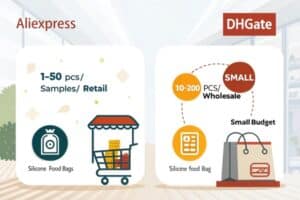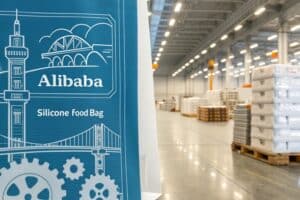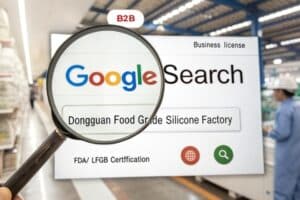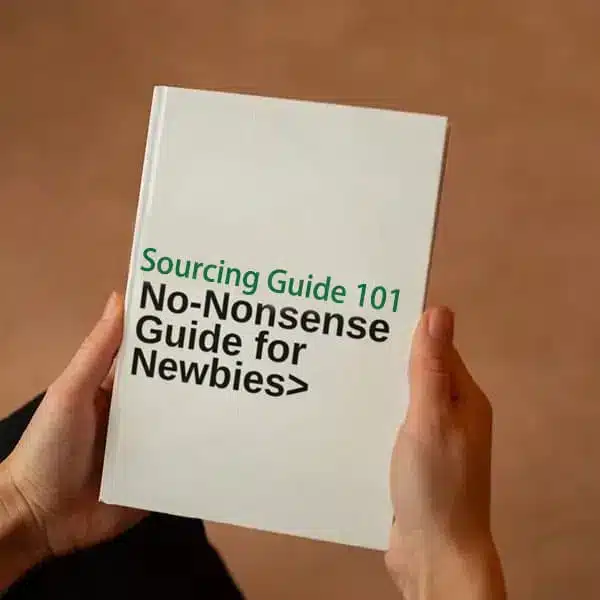Introduction – The Digital Search Begins
You’ve done your homework (Chapter 3), validated your product idea, and have a good grasp of the costs. Now, it’s time to find the actual businesses in China that can make your product. The great news? The internet has made this search far more accessible than ever before. You don’t necessarily need to fly to China (though that can be beneficial later) to find potential partners.
However, the sheer number of online options can be overwhelming. You’ve probably heard of Alibaba, but it’s just one piece of the puzzle. Different platforms and methods cater to different needs – from tiny test orders to large-scale custom manufacturing. Knowing where to look based on your specific situation (small budget? need custom branding? bulk order?) is key.

Let’s explore the most common and effective ways to find Chinese suppliers online.
Starting Small & Testing Waters (AliExpress & DHgate)
If you’re just starting, have a smaller budget (under $1,000), want to test a product with minimal commitment, or even explore dropshipping, platforms designed for smaller quantity buyers are your best entry point.

-
AliExpress:
- What it is: Part of the Alibaba Group, but functions more like a giant online retail marketplace (similar to Amazon or eBay) where Chinese sellers offer products directly to consumers and small businesses worldwide.
- Best for: Buying single items, very small quantities (1-50 pieces), testing product samples, dropshipping1. Prices are retail or slightly marked up from wholesale.
- How it works: Browse, add to cart, and buy directly. Communication with sellers is possible but not always necessary for simple purchases. Shipping is often handled by standard mail services (like ePacket) or AliExpress’s own shipping methods.
- Example: You could buy 2-3 different sets of reusable silicone food storage bags from various sellers on AliExpress to compare quality and features before committing to a larger order. The cost per set might be $8-$15.
- Pros: Very low/no MOQ, easy purchasing process, huge product variety.
- Cons: Higher per-unit cost, limited customization/branding options, variable quality, shipping can be slow, many sellers are resellers, not manufacturers.
-
DHgate:
- What it is: Another large online marketplace connecting Chinese sellers with global buyers, but generally more focused on small-to-medium wholesale orders than AliExpress.
- Best for: Buyers needing quantities slightly larger than AliExpress (e.g., 10-200 pieces), retailers looking for ready-made stock. Often shows tiered pricing (price per unit decreases as quantity increases).
- How it works: Similar browsing experience to AliExpress, but you’ll often see price breaks clearly listed. Communication with sellers is more common for confirming details.
- Example: On DHgate, you might find a seller offering the silicone food storage bags with a price of $7/set for 10+ sets, $6/set for 50+ sets, and $5/set for 100+ sets. This is better for stocking a small online shop than buying single units on AliExpress.
- Pros: Lower MOQs than Alibaba, often shows tiered pricing, balances ease of use with wholesale focus.
- Cons: Product variety might be less than AliExpress, still many resellers, customization might be limited compared to direct factory orders.
-
Key Takeaway: AliExpress and DHgate are excellent for initial market testing, sourcing samples, or fulfilling small orders without large upfront investment. However, for building a unique brand with custom products or achieving the best possible pricing on larger volumes, you’ll likely need to move beyond these platforms.
Scaling Up & Customizing (Alibaba & Other B2B Platforms)
When you’re ready to place larger orders (typically $1,000+), need custom product modifications, want your own logo (private label) and packaging, or want to deal more directly with manufacturers, dedicated B2B platforms2 are the standard.

-
Alibaba:
- What it is: The world’s largest B2B marketplace, connecting millions of buyers and sellers globally. It’s essentially a massive online directory and trade show.
- Best for: Finding manufacturers and established trading companies, sourcing bulk quantities (meeting MOQs often starting from a few hundred to thousands of units), private labeling3, custom product development (OEM/ODM).
- How it works: You search for products or suppliers, then initiate contact via inquiry messages or use the Request for Quotation (RFQ) feature to have suppliers bid on your request. You negotiate details like price, MOQ, production time, and payment terms directly.
- Supplier Types:
- Manufacturers: Factories that actually produce the goods. Often offer better pricing and customization capabilities but might have higher MOQs and less experience with export procedures.
- Trading Companies: Middlemen who source from multiple factories. Usually have lower MOQs, better English communication, and smoother export processes, but their prices will be slightly higher than direct factory prices.
- Key Features:
- Supplier Verification: Look for badges like "Gold Supplier" (paid membership) and "Verified Supplier" (third-party inspection of facilities). These add some layer of legitimacy but still require your own vetting.
- Trade Assurance4: Alibaba’s built-in order protection program. Offers security for payments and recourse if products aren’t as specified or shipped on time. Highly recommended for transactions.
- Example: You search Alibaba for "reusable silicone food storage bags manufacturer". You filter for "Verified Suppliers" with Trade Assurance. You send detailed inquiries to 3-5 promising suppliers, requesting quotes for 1000 sets with your logo printed on each bag and custom-designed recycled cardboard packaging.
- Pros: Huge selection of suppliers (including actual manufacturers), tools for verification and payment protection, ideal for customization and bulk orders.
- Cons: Can be overwhelming, requires negotiation skills, need to carefully vet suppliers despite verification badges, MOQs can be high for beginners.
-
Other B2B Platforms:
- Made-in-China: Stronger focus on industrial machinery, construction materials, and electronics, but also lists consumer goods. Interface can feel a bit more traditional than Alibaba. Worth checking as an alternative.
- Global Sources: Known for electronics, mobile accessories, and gifts/premiums. Often features higher-quality suppliers and runs popular offline trade shows in Hong Kong. Membership fees for suppliers are high, potentially filtering for more established companies.
-
Key Takeaway: B2B platforms like Alibaba are essential tools for serious importers looking to build a brand, customize products, and buy in volume. Diligent communication and supplier vetting are crucial for success.
Digging Deeper – Using Google Search
While B2B platforms are convenient directories, sometimes the best suppliers aren’t listed there, or they’re buried among thousands of competitors. Using Google strategically can help you uncover hidden gems.

-
Why Use Google?
- Find suppliers (often direct factories5) who don’t heavily invest in platform memberships.
- Potentially discover manufacturers with more specialized capabilities.
- Less direct competition from other buyers compared to platform inquiries.
-
How to Search: Be specific. Use keyword combinations like:
- "reusable silicone food bags manufacturer in China"
- "food grade silicone factory in Dongguan" (adding a known manufacturing city)
- "OEM silicone kitchenware supplier"
- "wholesale custom silicone bags"
- Look beyond the first page of results. Check company websites directly.
-
Evaluating Suppliers Found via Google: This requires more effort than on platforms with built-in checks.
- Website Professionalism: Does it look modern and provide detailed information (address, product specs, factory photos, certifications)?
- Contact Information: Is there a verifiable address and phone number? Match the address against Google Maps.
- Ask for Verification: Request their Business License6, relevant certifications (like FDA/LFGB7 for our silicone bags example), and potentially photos/videos of their factory. Ask if they have an Alibaba profile you can check (even if you contacted them directly).
- Website Professionalism: Does it look modern and provide detailed information (address, product specs, factory photos, certifications)?
-
Example: A Google search for
"LFGB certified silicone bag factory Guangdong"might lead you to the website of a mid-sized factory specializing in food-grade silicone products, which wasn’t prominently featured on Alibaba. You’d then need to carefully vet them using the methods above. -
Pros: Access to suppliers outside the main platforms, potentially find direct manufacturers, less noise.
-
Cons: Requires significantly more vetting effort, higher risk of encountering scams or unprofessional operations, harder to compare suppliers systematically, payment protection like Trade Assurance isn’t available (need secure methods like Alibaba Trade Assurance, PayPal for small amounts if offered, or T/T wire transfer with caution for larger orders, potentially using inspections).
Networking Online (LinkedIn & Social Media)
Sometimes, finding the right supplier is about finding the right person. Professional and social networks8 can be useful tools, though less conventional for initial sourcing.

-
LinkedIn:
- What it is: A professional networking platform.
- How to Use for Sourcing:
- Search for people with relevant job titles (e.g., "Sales Manager silicone products China," "Export Director kitchenware factory").
- Search for company pages of potential manufacturers.
- Join industry-specific groups related to manufacturing or your product category.
- Example: You find the LinkedIn profile of a Sales Manager at a company whose website you found via Google. You can connect, check their experience, see if they share company updates or product information, and initiate a professional conversation.
- Pros: Can help build direct relationships, useful for verifying individuals associated with a company, provides insights into company activity.
- Cons: Not primarily a sourcing platform, can be time-consuming, information may be incomplete, requires professional outreach etiquette.
-
Facebook:
- Use Case (Limited): Primarily useful for joining private groups related to importing from China, specific product niches, or Amazon FBA selling. You might find recommendations or warnings about suppliers, or occasionally see suppliers promoting themselves (approach with caution). Less effective for direct supplier discovery than LinkedIn9 or B2B platforms.
-
Key Takeaway: Social and professional networks are supplementary tools. LinkedIn can be valuable for vetting individuals and making direct contact once you’ve identified potential companies, but it’s generally not the starting point for finding a wide range of suppliers.
Conclusion
Finding reliable Chinese suppliers online is entirely achievable, but requires choosing the right tools for your stage and needs. Start with platforms like AliExpress/DHgate for testing and small quantities. Move to B2B giants like Alibaba for scaling, branding, and volume. Use Google search to dig deeper and find potentially hidden factories. Leverage LinkedIn for networking and verifying contacts. No matter which method you use, thoroughly vetting your potential suppliers is the most critical step before sending any money or placing a significant order, we advise you start from small trial order.
-
Learn about dropshipping to understand its benefits and how it can fit into your business model without large investments. ↩
-
Explore this link to discover top B2B platforms that can help you find reliable suppliers and streamline your sourcing process. ↩
-
Discover the advantages of private labeling and how it can enhance your brand identity and product offerings. ↩
-
Learn about Trade Assurance to understand how it protects your transactions and ensures product quality when sourcing from suppliers. ↩
-
Discovering direct factories can lead to better pricing and unique products; this link will guide you on how to find them effectively. ↩
-
Understanding the significance of a Business License can help you assess supplier legitimacy and reliability. ↩
-
Learn about FDA and LFGB certifications to ensure the safety and compliance of silicone products you source. ↩
-
Discover how social networks can complement your supplier search and provide valuable insights. ↩
-
Explore how LinkedIn can enhance your supplier sourcing strategy and connect you with industry professionals. ↩





